Nichole Louise's Blog, page 3
March 14, 2025
Review: Heart of Cruelty by Maybelle Wallis
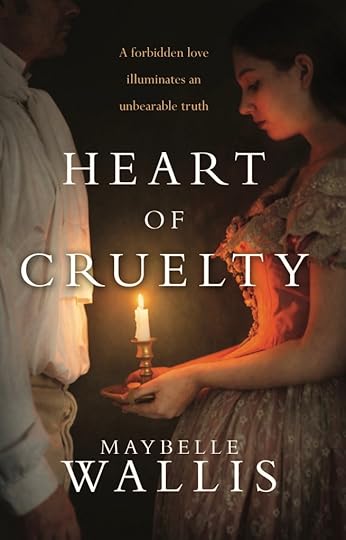
TW: This book has depictions of physical and sexual abuse
Hearty of Cruelty by Maybelle Wallis follows 20-year-old Jane Verity, reduced to a Birmingham workhouse in 1840 after a scandalous affair with an actor, Edmond. While Edmond has gone off to seek his fame and fortune in the theatre world, Jane has been cast out by her parents and their respectable London home and must seek refuge in a workhouse-having been seemingly abandoned by Edmond. Jane gives birth to her illegitimate baby, but the boy does not survive the cruel conditions of the workhouse.
Jane is plucked from the harsh workhouse by Birmingham Coroner Dr. William Doughty to serve as his housekeeper as well as a caretaker for his ailing wife. Jane is guarded and tentative around Doughty, having experienced abuse at the hands of Edmond, the workhouse employees, and the sadistic Rev. Glyde who sits at the head of the workhouse’s board and guides the “spiritual education” of the women in the workhouse. Glyde is also the brother-in-law of Doughty, Doughty having first some to the workhouse to investigate an apparent suicide by hanging.
As Jane works in service in Doughty’s home, she soon comes to find that his wife Harriet suffers from serious mental health issues and has been self-medicating with opium and laudanum to the point of dangerous addiction. In time, Jane discovers something much more sinister between Harriet and Glyde. While Doughty is at first brusque and distrustful of Jane, he soon warms–too much so. He and Jane battle their growing feelings for each other as Harriet’s condition worsens. While at times I found myself wanting Jane and Doughty to “get together,” more often than not I found his behavior very much of his time: problematic, controlling, possessive, even manipulative at times. Jane comes from a history of abuse and recognizes this behavior at once, despite his moments gentleness and kindness toward her.
Wallis walks this fine line with adept observation of social and gender norms of the time. Despite Jane being drawn to Doughty and dangerously edging toward another scandalous affair, she also recognizes several times that Doughty will never see her as, nor treat her as, an equal. From the outset she recognizes the power imbalance between them and how, if they give in to their passions, Jane will be lead to further ruin and likely back in the workhouse. Unlike most stereotypical Victorian heroines, Jane acknowledges that Doughty will always “see himself the master and she the servant.” As such, Jane sets a goal to regain employment as a professional piano player. Her music is her solace and her true vocation, as well as possibly her only “way out” of having to rely on very unreliable men going forward. She seeks to carve her own path and stand on her own two feet after her dealings with men who have effectively ruined her life. I really loved that the author did not sugarcoat the situation with Doughty, nor make him too modern in his sentiments and actions. I also appreciated the author’s ability to paint the gritty, dirty city of Birmingham in all its grimy industry. I was engaged the entire read through and would consider Heart of Cruelty a page-turner.
I am eager to read the next install of Jane’s journey, The Piano Player.
March 7, 2025
Review: The Paris Express by Emma Donoghue

The Paris Express by Emma Donoghue takes place 1895 and centers around the famously photographed Montparnasse train derailment. As such, the book has a compressed timeline of events in which the entire story unfolds over the course of six hours. I’m pretty sure this is the first time I’ve read a book that takes place over the course of hours, hyper-focusing on a specific event, so I wasn’t sure what to expect.
Overall, TPE was an entertaining and fast-paced (no pun intended?) read, but due to the large cast of characters and the very short time frame, I felt like I didn’t really get to know enough about many of the characters to be able to connect with them or have them stand out in meaningful ways. The two stand out characters to me were a young anarchist woman with an explosive (!) secret and an African-American painter who, like many late 19th century painters, journeyed to France for his craft. The other characters were vignettes, fleeting personifications–some based on real people, but in the end I am not sure if the majority of the characters should have had their own POV sections? I understand the motive for including a person from each class, as well as the engineers, but if it had been one from each social strata perhaps the cast of characters would have been more manageable for such a short book.
I will say though that the concept of having the novel unfold over the course of a few hours building up to one event, and the way in which the different classes of passengers experience the train ride, is interesting and unique. However, everything moved so fast (suppose that’s the point) that I ultimately don’t know if I cared greatly about the majority of the characters. That said, Emma Donoghue’s writing is as always high quality.
The Paris Express will be released March 18, 2025
February 28, 2025
Review: The Shadow Key by Susan Stokes-Chapman
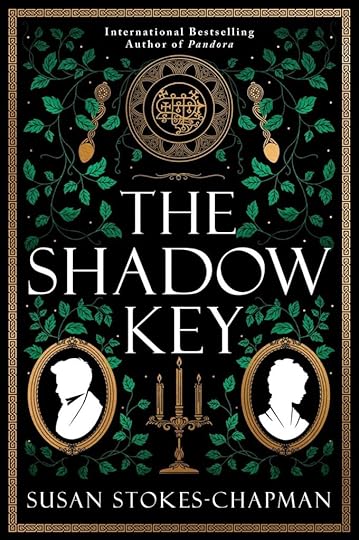
The Shadow Key by Susan Stokes-Chapman is another 18th century tale of mystery and magic akin to the author’s debut Pandora. I view Stokes-Chapman’s work in a similar aesthetic and sensibility to my own writing in blending historical fiction with speculative, gothic, and/or magical elements. The Shadow Key takes readers to the wild and beautiful countryside of Wales, where the remote community is both very insular and superstitious.
Dr. Henry Talbot arrives at the Plas Helyg estate to tend its infirmed mistress and is soon met with distrust and dislike from the locals who are suspicious of the English not only for the greater historical context, but also because of the English lords who have pillaged Wales’ mines for their own gain while the local communitie suffers. Henry and Linette of Plas Helyg are quickly drawn into a mystery surrounding the death of the previous village doctor, Linette’s mother’s illness, Linette’s cousin’s dark secrets and exploitation of the mines, and a mysterious symbol that keeps turning up, inevitably pointing to the Hellfire clubs of 18th century London.
The Shadow Key‘s mystery kept me engaged as I guessed throughout the narratives’ unfolding who was responsible for what, and to what end. The complex web of mystery and intrigue, blended with the occult, reminded of Laura Shepherd-Robinson’s The Square of Sevens. Some of my predictions were corrects, others not. While I admire the author’s writing style in creating a certain aesthetic, I found the end of TSK to be quite exposition heavy. With a large web of mystery and every loose thread to be accounted for, there were two scenes at the end that encompassed two adversaries detailing their entire grand plan which were quite mustache twirling villain moments. However, I get wanting the reader to understand the how and the why of all the threads at play. The author’s note states that she scrapped 100k words during revision, and I can discern a few sections of summarization of plot points where these cut words may have been diluted to mere mentions. I am not sure whether that was the author’s choice, or the publisher’s (their bottom line tends to not like long word counts.)
If you enjoyed Pandora, you will enjoy the TSK. If you have not read Pandora, I would still recommend TSK as an engaging historical mystery with speculative sprinklings.
February 20, 2025
Review: The Phoenix Crown by Kate Quinn and Janie Chang
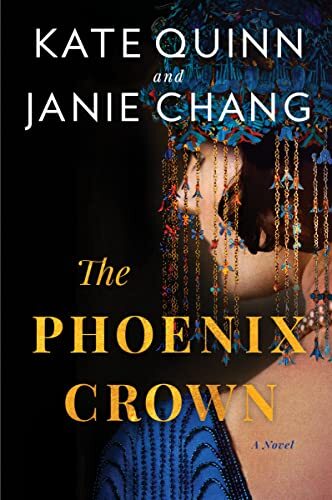
The Phoenix Crown takes place in 1906 San Francisco in the events leading up to, during, and after the famous earthquake. Gemma Garland is an opera singer trying to start her life over in San Francisco, but the artist friend she moved out to live with has mysteriously disappeared. Suling Feng lives in Chinatown and ventures outside dressed as a boy to avoid unwanted male attention. Suling also has a talent for embroidery and takes on jobs to stash enough money away to leave SF to avoid an arranged marriage to a man nearly three times her age.
The lives of Gemma and Suling collide at a mansion known as the Octagon House on wealthy Nob Hill, more specifically around the affluent and business-savvy (through perhaps unsavory means) owner Henry Thorton; Suling for her embroidery work and as a type of ornament with other Chinese women for his parties, and Gemma through her quick association with Thorton when he discovers her as SF’s next big opera singer. Through Gemma, he seeks to position him as a great patron of the arts. I found myself more interested in and sympathetic to Suling’s story, rather than Gemma’s. While Gemma wants to achieve her dream as a famous opera singer on her own, she also knowingly enagages in an affair with Thorton which raises her station. We’re told she is interested in Thorton beyond his power and wealth, but we’re not really shown that. Gemma’s backstory is hinted at but never fully explained in detail–we know she’s been burned in the past. That said, she is really not a nice or particularly likeable person for much of the book.
The pacing in The Phoenix Crown is a little odd in that what you’d think as the main event, the earthquake, actually happens around 60% into the book. The earthquake and subsequent fire scenes make up a rather small portion of the book. The rest of the story reads as a bit of a disjointed denouement or prolonged epilogue, repositioning the story of how Suling, Gemma, and the other women they befriend rebuild their lives and discover the resurfacing of Henry Thorton in society.
I’ve never read anything by Janie Chang, but I assume she wrote the Suling chapters which I seemed to enjoy the most. I usually love Kate Quinn, and I know she probably took a lot of her own experience as a trained opera singer for Gemma, but I just did not find Gemma likeable or compelling enough for me to be totally engrossed in her narrative as I have with characters in Quinn’s other books.
February 6, 2025
Review: Someday I’ll Find You by C.C. Humphreys
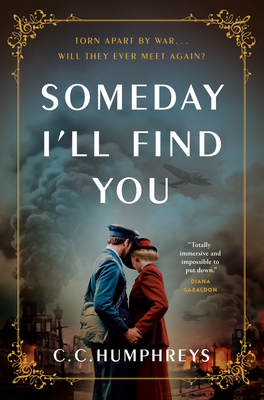
Someday I’ll Find You by C.C. Humphreys is partially based on the author’s parents’ experiences in WWII: Billy Coke, an RCAF pilot, meets Ilse Magnusson, a Norwegian SOE agent, in London during an air raid in 1940. Both musicians, Billy and Ilse form an instant bond and enjoy a whirlwind romance of three days in the countryside before they are to go their separate ways in the theatres of war. Ilse is to go to Norway to act as a spy for the British and Billy is to fly a fighter in the Italian and North Africa campaigns. In their three days together, Billy and Ilse try to simply enjoy the present without the weight of the past or the future–as many did during that time not knowing if they would live or die the next day. Although they try to keep things romantic and fun, Ilse knows there are secrets from her training that she cannot reveal. Billy has his own traumas from experiencing the carnage at Guernica as a pilot in the Spanish Civil War–a trauma he has not revealed to anyone until he confesses his darkest memories to Ilse.
Years later, Ilse has planted and nurtured the seeds of resistance and espionage in Oslo, while Billy has experienced new traumas Italy. Billy and Ilse reconnect briefly in London, but the scars of war, seen and unseen, mar their reunion and any future they could deign to plan. They must part ways again with no promise for the future. When Ilse returns to Oslo, she is drawn deeper into the network of resistance via her relationship with a German intelligence officer involved in the planning of Operation Valkyrie. Billy is reassigned to another flying unit, but against all odds finds his way to Oslo.
Don’t be fooled by the uber romantic cover and title–this story is not superficial fluff. While there is romance, this book does not shy away from the brutality and violence of war, nor does it sugarcoat the complex emotions associated with espionage and the high price of such assignments. C.C. Humphreys drew me in quick with this story, and I really cared about what happened to these characters. Someday I’ll Find You is not your run of the mill fluff WWII romance, but an examination of the much deeper, darker costs of war.
January 25, 2025
Review: Daughter of Sekhmet by Abigail Keyes
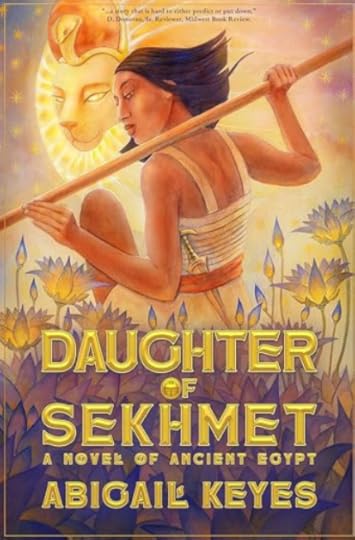
Daughter of Sekhmet by Abigail Keyes takes place in ancient Egypt during the reign of Ramesses the Great. I couldn’t help but be reminded of Assassin’s Creed Origins in exploring this rich world we don’t often see save in documentaries. I appreciate the originality of setting a story in a time period and location readers do not often get to sink their teeth into in historical fiction.
DoS follows Sati, a 16-year-old adopted girl (from what is modern day Syria) who resides in the city of Men-nefer (Memphis.) Since childhood, Sati has been trained by her father (a former soldier) in the ways of staff fighting, as well as in history and languages. Although Sati has been raised in Men-nefer, she still feels like an outsider not only because of her birth origin, but also in terms of the expectations for her gender in wearing certain clothing and makeup, as well as following the path of marriage and childbearing.
When unrest comes to Men-nefer and hits too close to home, Sati sets out on a classic hero’s journey of self-discovery to the capital of Per-Ramesses. On the river boat, Sati meets political advisor and nobleman Ahmose. The two form a quick kinship and Ahmose gives Sati a royal introduction when they reach the capital. Subsequently, Sati is granted her wish to serve as a solider and scribe in the “Good God’s” army. Training as the only woman in the army proves challenges both physical and mental, but Sati soon learns things are not as they seem with the general. Sati is then drawn into a greater conspiracy which could change the future of the kingdom.
I found DoS to be a fast and enjoyable read. As I stated earlier, it follows the classic hero’s journey of self-discovery which makes Sati an easy protagonist to root for. An example of one of the things I appreciated about Sati is that she is depicted as being very human. She gives in to her anger rather than having some unrealistic measure of wisdom and reserve, which makes sense for a 16-year-old. Sati takes risks many would not because she believes she is doing the right thing–damn the consequences. As such, the plot is propelled forward with the momentum of Sati’s choices, emotions, and influences of the Goddess Sekhmet.
Overall I found DoS easy to follow and straightforward without a plethora of subplots. If you are unfamiliar with ancient Egyptian history, geography, terms, gods, etc. this book might be challenging for you, however, the author includes a glossary of terms at the back of the book. Since I read on kindle, I didn’t know about the glossary until I finished. As such, while reading I deduced term meanings based on context and it turned out I was right! As an aside, I expect the author intends to write a sequel based on the somewhat unresolved nature of Sati’s story.
January 17, 2025
Review: A Poisoner’s Tale by Cathryn Kemp
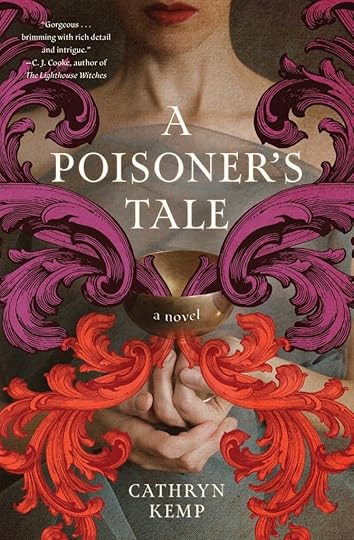
A Poisoner’s Tale by Cathryn Kemp gives life to the alleged real life 17th century poisoner Giulia Tofana. Kemp’s tale opens in Palermo, Sicily where Giulia is taught by her mother how to make the infamous Aqua Tofana poison. While her mother charges for other herbalist and remedy work, distribution of the Aqua is always free because it is given as means to freedom. The Tofanas do not distribute their Aqua to just anyone–it is made only for women seeking to be free of abusive marriages. While the more religious take issue with this line of work “playing God,” others view the Aqua as freedom and retribution from abusive situations in which they have no other way out of than death of their husbands. When Giulia’s mother is caught, Giulia at just age 14 travels to Naples before settling in Rome where her “business” grows and she takes in a circle of women poisoners and herbalists.
I have A LOT of mixed feelings about A Poisoner’s Tale. I usually try not to include spoilers in my reviews, but there are points I have to talk about because I think it is important for readers to know there is a *trigger warning of rape, child rape, and domestic abuse in the beginning of this story.*
*
*
When Giulia is 14, she is raped and subsequently impregnated by her step-father. Her mother, being a cunning woman, immediately wants to Giulia to take an abortive–not just because she is 14 and it was her step-father, but also because there is no hope of Giulia securing a “front” marriage with her mother’s past history as a courtesan. However, there are some general allusions to Giulia having the Sight and feeling an instant connection with the collection of cells in her womb (I word it this way because she feels this connection pretty much as soon as she gets pregnant.) As such, she is adamantly against an abortion. I have to be honest–I really struggled with this turn of events and it even made me question if I should continue the story. It had already been established that Giulia and her mother were not particularly religious Christians, therefore the reason to forgo an abortion was not based on Catholic doctrine. Kemp’s vague allusions to the Sight connection to the barely formed fetus was not enough to make me believe a 14 year old would EVER have her rapist’s child, from her step-father no less.
I did in fact choose to keep reading because I figured there must have been a narrative reason WHY she had to keep the baby. In a 23 years later time jump, Giulia’s daughter is a haughty astrologist named Girolama. Having finished the book, I honestly do not think the story would have been changed much with the omission of Girolama. She did not contribute much, if at all, to the story beyond reminding Giulia of her rapist (there are a few lines referencing how her physical appearance and temper were very much like her rapist and that just did NOT sit right with me at all.) In a story presumably meant to show a more freeing, feminist side of history, I really struggled with the choice of having 14 year old Giulia have a rape baby.
I also felt that the inclusion of the Pope’s POV chapters were unnecessary and detracted from Giulia’s story. I honestly don’t know why they were in the book at all as this tale seemed to be about uplifting the voices of women forgotten by history, but maybe I missed something. It seemed like there may have been some connection with their mothers, but it was ambiguous as if the author either hadn’t quite figured it out or it was not written clearly enough for this reader to figure out the connection (did they have the same mom or were related in some way??) I was not invested in, nor did I particularly care about his POV and found myself skimming over his bits. The story would have been exactly the same with the omission of his chapters.
I was also confused as to why Giulia seemed so surprised when her circle of women, and later her, are caught when she was willfully and flagrantly spreading her Aqua throughout Rome.
The story ends how you would expect, drawing out the inevitable in repetition for reasons that do not really serve the story. While the writing style itself was of quality (the writer is indeed capable at the craft of prose,) the story and plot did not provide an engaging or believable enough story or character motivations for me to truly enjoy this book.
January 9, 2025
Review: Something Wicked This Way Comes by Ray Bradbury
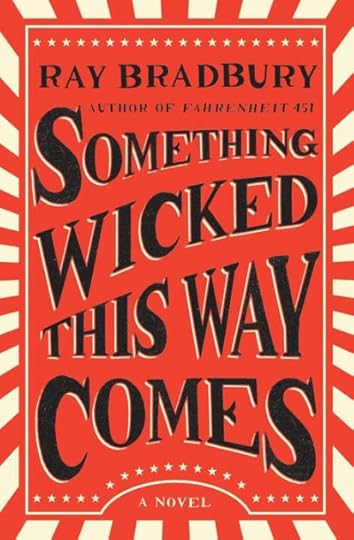
Something Wicked This Way Comes by Ray Bradbury comes recommended to me by a friend. I enjoy sci-fi and horror, but surprisingly have never read any Bradbury! That said, I did not know quite what to expect in terms of prose and style.
SWTWC follows 13 year olds Will and Jim as they uncover the dark mystery of an unsettling carnival newly arrived in town. The fact that the carnival arrives in autumn (the carnival people are later referred to as the autumn people) immediately tips the boys off that something is not right. That night, they witness something very supernatural about the carousel which in turn leads to more disturbing events such as a grown woman being shrunk down to a child, a man seemingly being resurrected from the dead with electrocution, and a witch in a type of hot air balloon seeking to attack their homes (yes, you read that right.) These mysterious and unsettling events come to a head when Mr. Dark, the apparent leader of the dark carnival, becomes fixated on Will and Jim because he knows they, with the help of Will’s father Charles, have uncovered the carnival’s evil secrets. As an aside, the scenes of the three in the library researching the carnival’s origins really reminded me of IT, and I wonder if King was at all inspired by this story?
A huge component of the novel relies on Charles, and his relationship with his son. Charles views himself as an older father (54,) and therefore ineffective or out of touch. He finds solace long into the nights in the local library in which he is employed as the janitor. Charles is an introspective and wise character, quite insular and perhaps existing at arm’s length from his own son until the boys draw Charles into the mystery of the carnival. Through the misfortune and turmoil the carnival has brought, Charles seems to “find” himself as both a father as well as someone still youthful at heart and still able to contribute to the world–and his son’s life–in a meaningful way.
Although the novel is largely supernatural horror and science fiction, there are many themes within it concerning aging, youth, brotherhood, and fathers and sons. While I appreciated the original (at the time) concept, many times I found myself struggling to follow what was really happening in the narrative. Much of the plot gets buried and hidden beneath the highly stylized prose. Sometime it is beautifully and uniquely written, but more often than not I found it distracting and hard to follow.
December 19, 2024
Review: The Witching Tide by Margaret Meyer
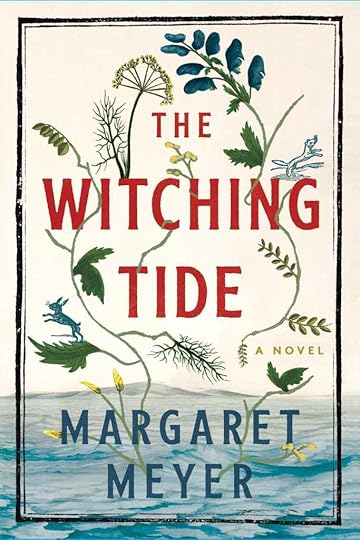
How many historical novels about women being accused of, and/or actually being witches can I read? Well, the number is infinite, as this subject with forever interest met with its intersection of social history, feminism, gender politics, othering, etc. That said, The Witching Hour by Margaret Meyer has been on my TBR for a while. I really don’t understand the current 3.3 average rating it has on Goodreads, because I quite enjoyed it and found it a very engaging, fast read.
The Witching Tide focuses on middle aged servant and “wise woman” Martha, a mute who lives with an unidentified condition that causes her to cough blood and renders her unable to speak. I presume she had/has consumption and perhaps blew out her vocal cords early in the disease from coughing? It’s hard to know for sure, but the author curiously describes the affliction as a worm living in her throat which makes it all the more unsettling. Martha’s village of Cleftwater is thrown into chaos when the Witchfinder Silas Makepeace comes to town and begins drumming up a frenzy of accusations against various women. I couldn’t help but think of the 1968 Vincent Price film Witchfinder General (based on a book.) The events in The Witching Tide are based on the true witch trials of 1645 (not far from my own family’s origins, in fact.)
Martha’s household is thrown into disarray when her fellow servant Prissy is taken into custody for her alleged hand in the death of a newborn both she and Martha helped birth. In truth, the child was born deformed with a condition that would not have allowed it to live. The mother’s sister, Jennet, is also taken into custody with ties to the child’s death. As these women are taken, Martha feels both helpless and ashamed because by the Witchfinder’s logic, shouldn’t she be next for arrest? What’s more, Martha keeps secret her own mother’s “wise woman” ways and carries with her an inherited wax poppet that may or may not be an actual source of power for Martha. Martha’s master, Kit, soon makes a deal with the Witchfinder and his lead Search Woman to protect Martha in that she too, with her healing skills, becomes a Search Woman. I found this portion of the novel to be the most interesting and engaging. This search function essentially means she inspects the bodies of the accused witches for any marks of the devil and/or extra teats from which their imps suckled. The stretches and reasonings that were made to accuse women will be utterly ludicrous to modern readers, but I am sure the author based these details on true accounts. For example, one woman has a birthmark on her cheek which is taken as a devil’s mark. Another woman has what I assumed to be skin tags beneath her breast which were taken as teats for imps!
Martha walks the line for a time, but she too cannot escape the frenzied accusations. What culminates is a formed sisterhood for survival among the women, as is the case with many of these types of stories as well as in real life with women who are othered and ostracized by society if they have endured SA, for example. Martha’s poppet becomes a character itself as its form and use changes to a channel of power and strength for the women. The group fights for survival amidst the most brutal and sickening means. My only confusion with this novel was how Martha’s fate comes to be, as it is not explained in detail.
Meyer’s writing style may not be everyone’s cup of tea: it is more telling instead of showing, and I do believe this style has a time and place if done right. In my opinion, she pulls it off with thoughtful, meaningful wording and prose that serve the themes of the narrative.
December 10, 2024
Review: The Lost Journals of Sacajewea by Debra Magpie Earling
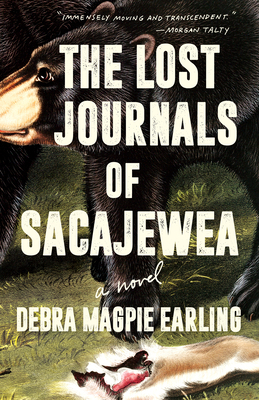
The Lost Journals of Sacajewea by Debra Magpie Earling is not your typically structured historical novel, but rather a mix of narrative poetry and prose. Sacajewea is introduced to the reader as the pre-teen and we follow her until about the age of seventeen. While most only know about Sacajewea through the context of the Lewis & Clark Expedition, Earling reframes this story from her POV as a kidnapped Lemhi Shoshone teenager who is sexually abused and assaulted, as well as forced to marry and work for a white man named Toussaint Charbonneu (who historically had multiple teen and pre-teen Indigenous wives.) Readers take note this tale carries with it a trigger warning for SA and violence. Earling’s dedication is apt for this story: “For the stolen sisters of all Native Nations.”
Earling’s depiction of Sacajewea is not the “classic American” tale of an Indigenous woman “helping” Lewis & Clark explore and expand the United States of America in their Imperialistic mission of Manifest Destiny no matter the human and environmental cost. Sacajewea is a scared kidnapped girl suffering daily to survive against the utter brutality against her and other Indigenous women. Undoubtedly, Sacajewea carries with her the words of her mother that “Men do not know Women carries a voice inside her to help her live. When you stop hearing your voice you are nothing more than snare bait.” Essentially, women have a special intuition for survival when it comes to merely existing around men. Sacajewea forms bonds with other stolen women and they try their best to support each other despite their constant exploitation and abuse at the hands of not just white men, but Indigenous men as well who seek to gain favor with the white men by essentially forcefully prostituting their wives.
Readers should be aware that this book is not structured in a traditional way, as it is predominantly narrative poetry (in my opinion.) While this style and structure is creative and beautiful, it can at times make following the plot and characters challenging. Terms and words are used that are not defined, meaning the reader must figure them out based on contextual clues. For example, I did not figure out the meaning of one word until about half way through the book. Another time I thought someone she had been interacting with was real and possibly a two spirit individual, but by the end I began to interpret this person as a spirit. Maybe I misinterpreted the “He is Woman” character incorrectly all along? I believe there may be one or two other characters who were spirits as well. Those example just encapsulate how much is left up to reader interpretation due to undefined terms, as well as vague but visceral descriptions. If you are used to traditionally formatted novels and think interpreting poetry as a narrative structure will be challenging, you may find this book hard to follow. If you accept the challenge, I encourage you to simply enjoy the unique structure and formatting and poetic narrative rather than trying to fit this story into a certain box. I also believe this book is all about reclaiming Sacajewea’s story on her terms, which is summed up toward the end with the lines, “Do not trust anyone who tells you you cannot tell your story. Do not trust anyone who tells you there is only one story. If there were only one story or one way of seeing things all stories would die.”



